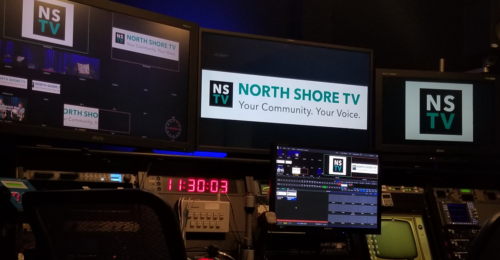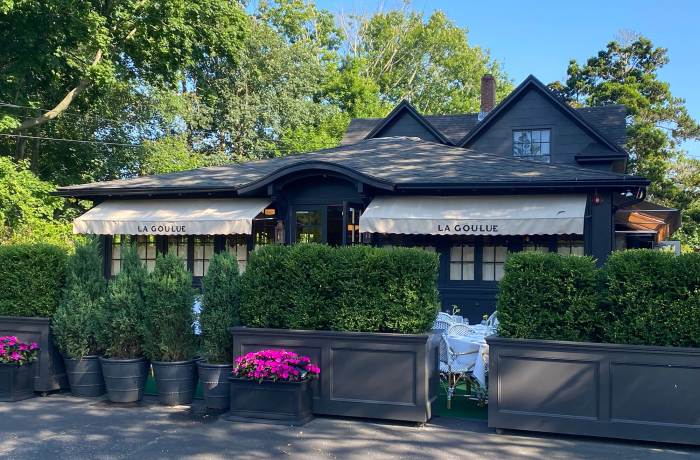
Back-to-back press conferences on March 24 exposed a split among the mayors and elected officials of the villages and hamlets that will be affected by the LIRR Expansion Project.
The MTA is proposing to add a third track on a 9.8-mile stretch of its main line from Floral Park to Hicksville, arguing that the estimated $2 billion project is necessary to avoid delays, improve service, enhance safety, and spur economic development—among other benefits.
In Westbury, Mayor Peter Cavallaro was joined by Oyster Bay Supervisor Joe Saladino, and other elected officials at Village Hall to announce their support.
Cavallaro said he wants to “move forward with the project in a positive, collaborative and productive way” and hopes to make the process as painless as possible on residents.
“The idea is to identify those it impacts and try to mitigate those negative impacts,” said Cavallaro, who believes “the benefits this will have for Long Island for the next 50 to 100 years are almost incalculable.”
Saladino praised Governor Andrew Cuomo’s leadership in pushing the expansion.
“He has worked on literally hundreds of projects across the state, taking into consideration environmental impacts, all of the financial concerns, and also the financial benefits for our regions, our jobs and our infrastructure, and most importantly, the needs of the residents and small businesses that make up Long Island,” said Saladino. “Change often comes slowly and with a little feather ruffling. It’s just the nature of bringing about change. But our job as the leaders on Long Island is to be respectful of everyone, to listen carefully and to analyze the situation.”
Saladino touted the good that would come from the project in fixing the infrastructure and providing “jobs that come from the construction phase and the permanent jobs that come from this project that live on to help so many of our residents.”
The supervisor wants to work with communities and businesses to “educate, communicate, cooperate and collaborate” so that the project and the community will have the best of outcomes. He emphasized the importance of being proactive in ensuring that the governor and MTA are not doing something that the residents don’t want.
“We have to think about the future and think about our children, our grandchildren and the improvements that can be made today to benefit them,” said Legislator Rose Marie Walker.
Since the LIRR serves 300,000 riders daily—many of whom depend on it for their livelihoods—she stated that consideration must be given to issues such as late trains, traffic, parking and others that commuters face daily.
“The [project] is a necessary undertaking if we want to keep Long Island competitive,” said State Assemblyman Michael Montesano. “We cannot thrive in the 21st century with a 19th century transit system—it’s that simple. I applaud the governor and his project team for their thoughtful approach to developing smart growth solutions for my constituents while weighing the needs of this pioneering transportation project that will have transformative effects on our region.”
Mineola Mayor Scott Strauss and Town of North Hempstead Supervisor Judi Bosworth also expressed support for the project.
The Contra Side

An hour later, at New Hyde Park Village Hall, Mayor Robert Lofaro headed a parade of speakers that included Garden City Mayor Nick Episcopia and Floral Park Mayor Thomas Tweedy and others. In general, they questioned the MTA’s Draft Environmental Impact Statement (DEIS) as much as the project itself.
The detailed, nearly 2,000-page draft was released in November and the MTA held a series a meetings for public input with the comment period ending in mid-February. Given the detail and complexity of the DEIS, the named villages hired the firms of Beveridge & Diamond and Vertex to closely examine the study.
Lofaro said the resulting report “tells us all we need to know about the DEIS, and what we learned is that there was a great deal of deficiencies, inaccuracies and superficial data produced in that document.
“It’s not a matter of, are we opposed to the project, or do we support the project,” added Lofaro. “What’s important here is transparency, openness, fairness and accuracy of what is going to be done.”

Beveridge & Diamond’s Michael Murphy argued that the DEIS violated core principles of the State Environmental Quality Review Act (SEQRA). He questioned the project’s schedule and cost. The DEIS, he noted, “lacks critical data, contains errors, relies on key assumptions that are not justified, and does not offer the data-driven analyses we would expect for this type of project.”
It also failed the aim of SEQRA by not involving the public in a significant way, Murphy asserted, adding, “The message we conveyed to the MTA was, ‘Don’t rush the process.’ We were fearful that they wouldn’t hear our message, and unfortunately, what we feared came to pass.”
“There’s a serious question if using $2 billion for a project like this is using our money wisely,” said Sen. Elaine Phillips. ”When this third track was fast-tracked, the governor and the MTA promised us an open and fair-minded process…This is a project the runs through people’s backyards. These people deserve and are owed the answer to their questions.”
She added, “So I will say once again to the governor and the MTA, ‘This project cannot go any further until our questions are answered.’”
“This project is not being dictated by our local needs,” said assemblyman Ed Ra. “It is being placed upon us from above. Together we need to continue to stand for our residents, who are asking for answers to their questions.”
Nassau County Legislator Richard Nicolello noted that the merits of the rail expansion could be argued, but questioned the review process.
“This is a major project,” he said. “The main line does go through people’s backyards. They are going to have to live for years in a construction zone with all that [entails]. All we are saying is that people deserve a full process, deserve that every impact be studied and every impact be known before it’s approved.”
Among the deficiencies in the DEIS, said Floral Park Mayor Tom Tweedy, is the issue of ground contamination along the construction zone. Such contaminants might be disturbed during the excavation process.
“The LIRR came to the residents and said that they were going be doing borings in mid-March,” he stated. “The commenting period ended in mid-February. How can a DEIS properly address the issues of what’s in the ground if they don’t even begin to do borings until a month after the comment period is over? This is a deficient plan. It needs to be done again.”
Garden City Mayor Nick Episcopia encouraged residents to read the DEIS, available on the village’s website and at www.amodernli.com. “And when you come away with it you will be appalled at what wasn’t done,” he said. “The people have a right to answers. That’s why we have an elected government.
“Stay with this,” he urged. “Do not let people convince you that this will be okay. You’re not NIMBYs. You are residents, you are taxpayers who deserve the right answers.”
Lofaro was asked to respond to the press conference that took place earlier in support of the project.
“I know Westbury has a multi-generational business that will be razed to put in the third track. And I know that as a mayor, if one resident is affected, I have to speak for that one resident. And I hope that the mayors of the other residents along the main line speak for their residents as well,” he said. “I would ask the mayors who are in support of the program why they are in support of it. Or why they feel differently about the negative impacts of the project. I’m not able to explain why they’ve taken a different position.”
The Nassau County Village Officials Association approved a resolution in support of the affected communities calling on the MTA/LIRR to “address all legitimate and reasonable comments and concerns raised by the [villages] and their respective residents and stakeholders and consultants.”
—With additional reporting by Nick Ferretti

































